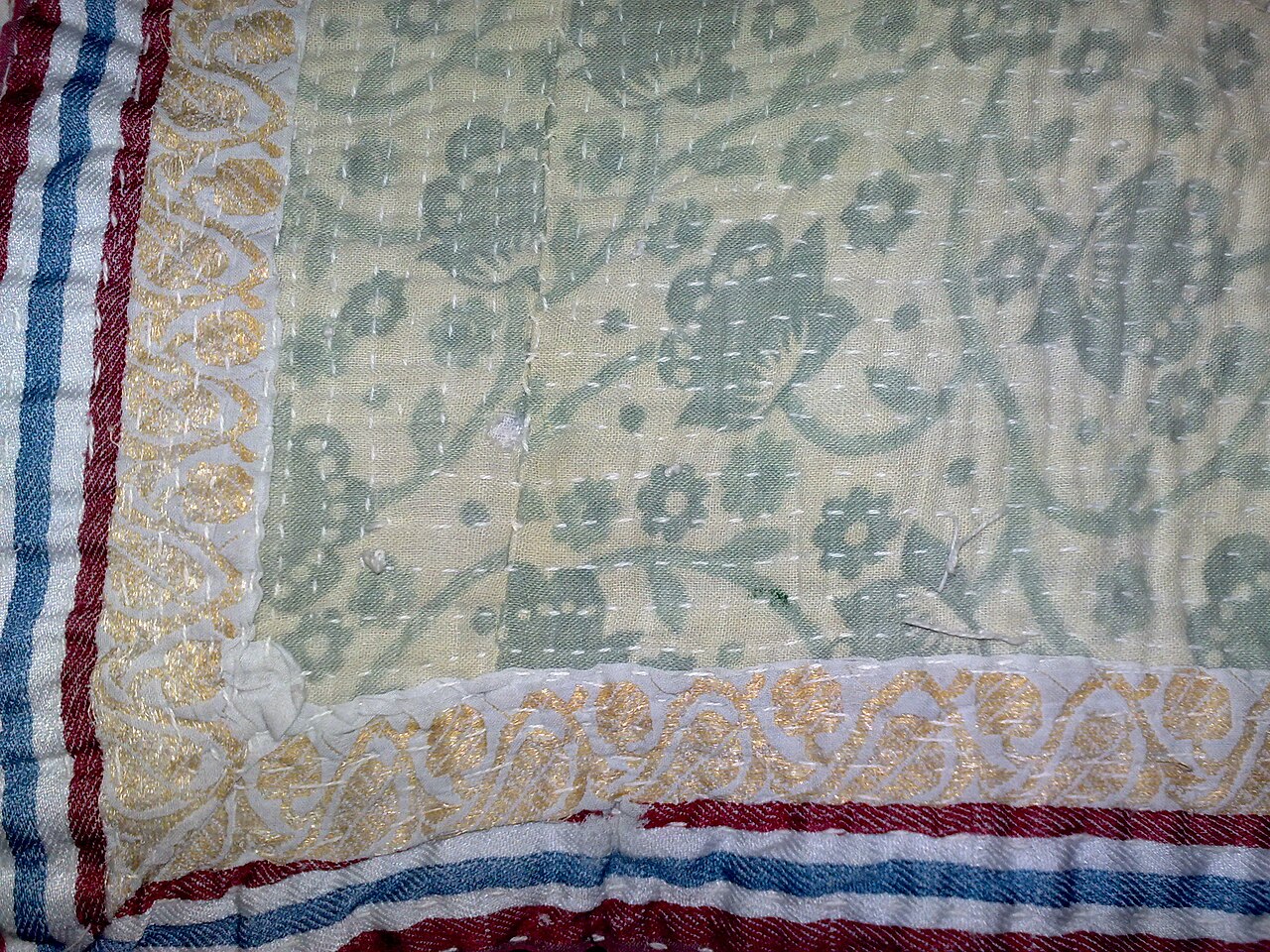 |
| Here is a picture of a kantha I found on wikipedia because I'm lazy and this is a perfectly good example. |
So why am I dancing around, poking awkwardly at the term "Indo-Portuguese colcha"? Well lets start with the term "Indo-Portuguese". It wasn't used in period, so that's one strike against it. The Portuguese landed in Goa in west India and pretty much took over (more on that later). They called this area Estado da Índia. Creative, very creative. A guy named Francisco de Almeida decided to build a fort there and there you ago, a Portuguese state...I know I'm over simplifying but it's for brevity. What I'm saying Indo-Portugal isn't like a celebrity name mash-up like Beniffer. It was a colony set up for making money not for sleepovers and braiding each others hair. So calling something that was made by a colonized people a sort of cutesy nickname diminishes that fact that these textiles were made well before the Portuguese landed.
The fast answer to what I'm making is an Indo-Portuguese colcha. For the long answer keep reading and as a bonus there is a hurdy gurdy project I'm working on. It's beautiful and involves a hammer.
The latest quilt beast is based on objects made in India (Bengal and Gujarat, Bengali examples being my main focus for this project) . They are cotton with silk embroidery (it feels so wrong and yet...so right). They depict a mix of scenes ranging from hunting scenes, nautical scenes, biblical tableau, Hapsburg double headed eagles, Greek mythology, giant snakes eating elephants and not to be ignored is the peacock eating regular sized snakes. I mean they could be giant peacocks eating giant snakes but who knows.
The second term I take issue with is "colcha". Yeah I know...it's just Portuguese for quilt. Big whoop, a quilt is just a term for a fabric sandwich. Well guess what? Chicken butt. I'm pretty sure that these come from the same tradition as the kantha. A kantha is a way that old sari were used to make padded floor coverings to be used as sleeping or sitting mats. I'm still trying to figure out if that's a fact or just the ravings of a crazy embroiderer. So again, I'm trying to acknowledge the colonization by use of my language in describing these objects. Is a kantha a quilt, yes. Is a colcha a quilt, yes. Is the word colcha used by the colonizers. You betcha.
So what am I going to call my newest quilt beast? I don't know. "Quilted embroideries employing aari technique, using native wild silk and made for the export market" doesn't exactly roll of the tongue. Nor does, "Colonized India embroidered textiles". So for now it's called quilt beast.
Now for the hurdy gurdy project!
Did you know gurdies require their wheels to be rosined? They do! And to make it is a sticky mess! The maker of the instrument said that my best bet is to use liquid rosin and I could make it myself. I ordered so regular old rosin from the internet and examined it.
 |
| It say "Violins violas cellos" not hurdy gurdy...but is doesn't say that I can't |
 |
| shiney and candy like |
 |
| That's right! The correct tool is a cross-peen hammer! |
 |
| Why are you so strong tree sap?! |
Hoping a second love tap would break it free I gave it a try.
 |
| It crumbled into what looks like dust and pop rocks |
 |
| Look science! |
 |
| The cat was judging me |


